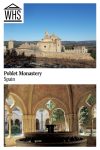Poblet Monastery
By Elliott Farmer
What is Poblet Monastery?
“This Cistercian abbey in Catalonia is one of the largest in Spain. At its centre is a 12th-century church. The austere, majestic monastery, which has a fortified royal residence and contains the pantheon of the kings of Catalonia and Aragon, is an impressive sight.” – UNESCO World Heritage.
Disclosure: This article contains affiliate links. Making a purchase through an affiliate link will mean a small commission for this website. This will not affect your price. Privacy policy.
The religious order at Poblet Monastery was the Cistercian Order, founded by a group of Benedictine monks. The Cistercian monks established Poblet Monastery in 1151. The Monastery, begun in the 12th century, now contains a variety of architectural styles such as Romanesque, Gothic, Renaissance and Baroque, which are blended together very well.
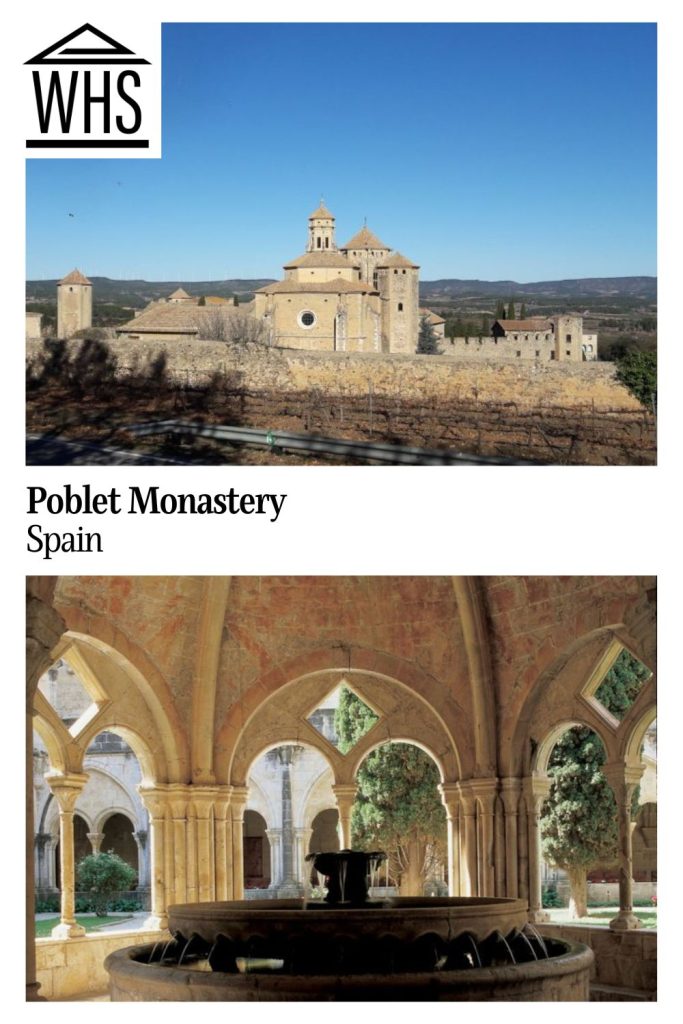
King Pere III El Ceremoniós (Peter the Ceremonious, 1319-1387) tied the monastery to the Crown of Aragon, constructing the royal pantheon there, which until then had been in Santes Creus. Here they installed the sepulchres of Alfonso I, Jaume I El Conqueridor (James the Conqueror), Pere III and many of his royal successors. The sepulchres, made of white alabaster, were carved by the best sculptors of the period.
Being a Cistercian monk means adhering to an austere set of principles called Ora et Labora (meaning “pray and work”). Work was in the kitchen, the chapel, the library or labouring in the various vineyards in the surrounding countryside. The resident monks inside the large, fortified complex had to function as a self-sufficient community with the wealth of the monastery coming from the land it owned and harvested, with the agricultural estates being mostly vineyards.
Although historical records are not clear, it is believed that around 130 monks lived and worked at the monastery. It carried a lot of prestige for being the royal monastery for the kingdom of Aragón and the burial place for multiple kings.
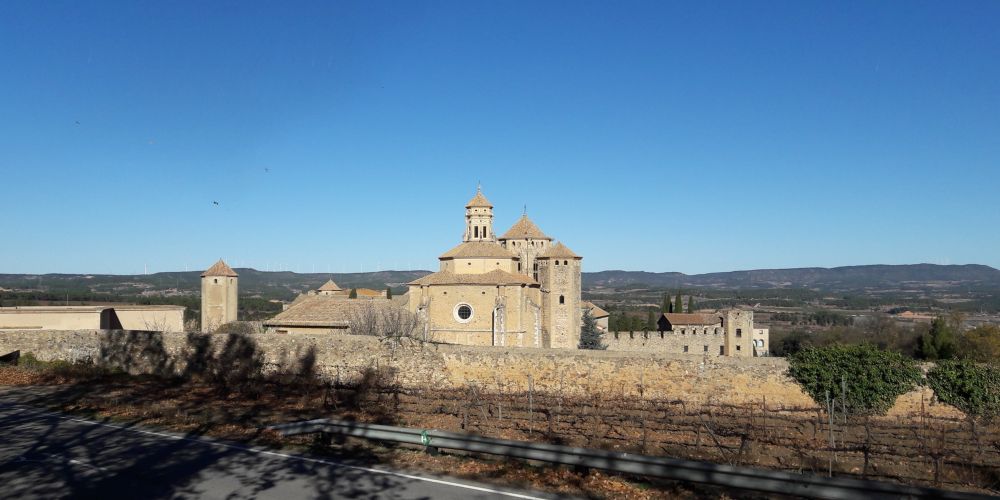
The downfall of the monastery came about in 1835 when the Spanish prime minister at the time, Juan Álvarez Mendizábal, instituted a campaign of seizing church lands. It was called the Ecclesiastical Confiscations (Desamortizacion de Mendizábal). Looters robbed the library of historic treasures and torched various parts of the monastery, causing the Cistercian order to flee.
It wasn’t until the 1930s that the restoration of the ruins of Poblet Monastery began. In the 1940s it received a fresh monastic purpose as it welcomed four Italian monks, chosen to restore the religious order of the site. Today, the resident community of monks numbers around 32, and their daily cloistral routine dictates the running of the monastery as a tourist attraction.
Why is the Santa Maria de Poblet Monastery a UNESCO World Heritage site?
Poblet Monastery, known locally as Reial Monestir de Santa Maria de Poblet, is “a unique artistic achievement and one of the most perfect expressions of Cistercian style,” according to UNESCO. It contains numerous works of art within it that UNESCO calls “masterpieces.” It also represents “a unique blend of architectural forms” for its different uses over its long history in that, besides being such a large and complete Cistercian abbey as well as a pantheon, it was also used for military purposes and as a palace.
What can you expect on a visit to Poblet Monastery?
The monastery is unique in the sense that it was built as a fortified location and resembles more a castle than a religious site. The outer walls are two to three metres high (7-10 feet) and castellated with the main entrance being via an arch (Porta Daurada). The monastery inside the inner courtyard has two castle-like watch towers (Porta Reial de Poblet).
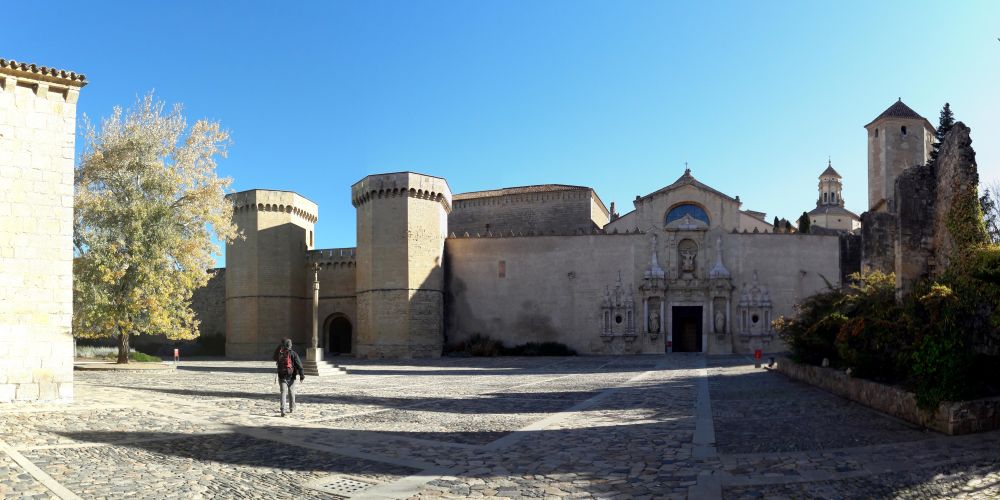
Within the monastery compound there is a secondary castellated wall. You can walk along its top as part of the monastery visit. This gives fantastic views over the surrounding farmland and towns.
Unlike many religious sites in Spain that are excessively decorated with dripping amounts of gold, paintings, and crucifix statues, Poblet Monastery is very austere in its decoration, allowing you to appreciate the natural beauty of the work of the stonemasons that built it.
That is not to say that it is an empty space. The cloisters are stunning with the carved stone and the beautiful garden with a fountain. The rooms and halls are spacious, and, with the help of the additional audio guide, they give a good insight into monastic life. The main church has statues, pews and an organ as well as the beautiful high vaulted ceiling.
Is Santa Maria de Poblet Monastery worth visiting?
Poblet Monastery is a former royal monastery. Another example of a former royal monastery is the Pedralbes Monastery in Barcelona for nuns, which was founded by King Jaume II for his wife Elisenda de Montcada. This is a walled fortified monastery on a much smaller scale than Poblet Monastery. Today it is a museum with no remaining nuns on site. What makes Poblet monastery special when compared to Pedralbes Monastery or the Montserrat Monastery is that it is still an active religious site with resident monks. It’s also not very touristy. When I visit Montserrat, it is always full of tourists and the silent solemnity of a monastery complex is somewhat lost in the background noise of the tourists, whereas Poblet retains this silent contemplative ambience.
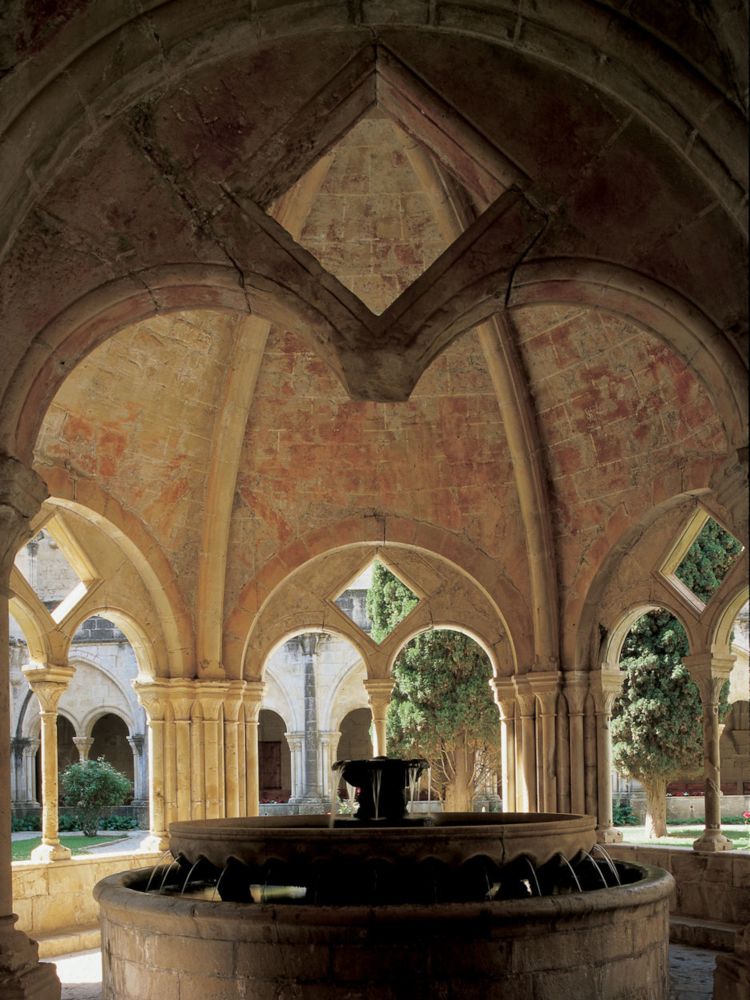
Poblet Monastery is worth the extra effort to visit, ideally suited for travellers who want a more authentic monastery visit compared to Montserrat.
Tips for Visiting the Santa Maria de Poblet Monastery
The visit to the monastery is usually conducted as a 40-minute guided tour inside. You are free to walk around outside in the courtyards and gardens.
The site closes between 12.30 and 3:00pm each day because the monks eat lunch in silence at the long wooden benches of the refectory. While they eat, one of them reads scriptures in Catalan from the pulpit.
I visited the monastery as part of a 14km (7 mi) day hike of the Cistercian Route (Known locally as Ruta del Cister) from L’Espluga de Francolí to Montblanc (a medieval walled town on the same Renfe Regional train lines.)
- Try this tour that includes visits to Monserrat, Poblet and Montblanc.
- This private tour from Salou or Tarragona goes to Poblet, a winery and a couple other historic sites.
- Or rent a car so you can travel more freely.
The Ruta del Cister passes via Ermita de la Santissima Trinitat and Ermita Sant Joan de la Muntanya, which are two mountain hermitages in the forested lower hills of the Prades mountains. The highest part of the route is Mirador de la Pena, which is a viewpoint over the mountain landscape and Montblanc town.
The monastery sits in the foothills of the Prades mountain range within farmland that is used for wine grape growing. This region of Catalonia, called the Comarca de la Conca de Barberà, is famous for white, red and rose wine production, so be sure to pick up a bottle in town.
Book your accommodations near Poblet or in Salou, Tarragona or Barcelona.
And if you’re going to be in Barcelona, make sure to visit some of the Works of Antoni Gaudi, which together form a UNESCO site, and the Palau de la Musica Catalana and Hospital de Saint Pau, also a UNESCO site.
Where is Poblet Monastery?
Santa Maria de Poblet Monastery is in the small village of Poblet, a 3.9km (2.4mi) walk from L’Espluga de Francolí train station on the Renfe Regional R14 and R13 lines.
The train from Barcelona Sants station to L’Espluga de Francolí takes 2h 12mins. If you visit the monastery as part of the Cistercian route, take the first train, which arrives at L’Espluga de Francolí around 9:30am. Aim to be at the monastery by 10:30am, allowing 1.5 hours to visit the monastery and an additional 5 hours to complete the route from the monastery to Montblanc.
Getting there by car from Barcelona: Take the AP7 and AP2 motorway toward Lleida. Before Lleida you will see a signpost for Montblanc and L’Espluga de Francolí. There is free parking in front of the Monastery in Poblet. Going by car allows you to visit the monastery and Montblanc in the same day.
Compare rental car prices here.
For more information about visiting hours and tickets consult the Santa Maria de Poblet Monastery website.
Have you been to Poblet Monastery? If so, do you have any additional information or advice about this UNESCO World Heritage site? Please add your comments below!

